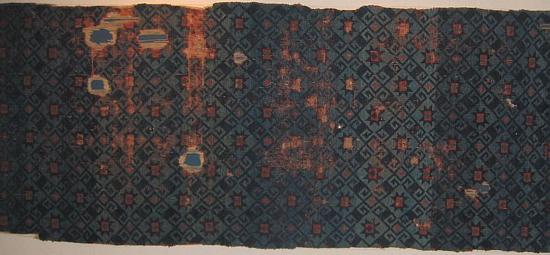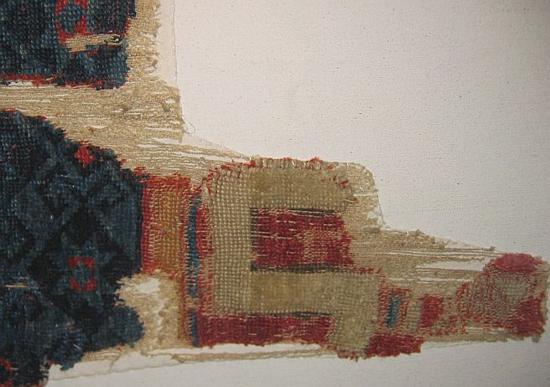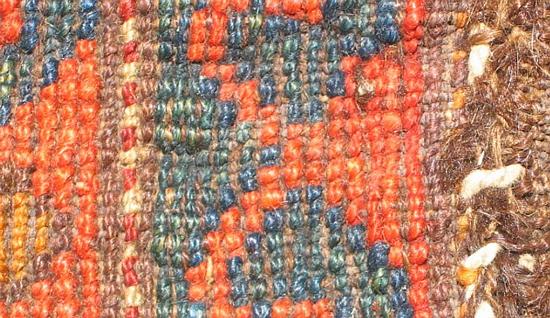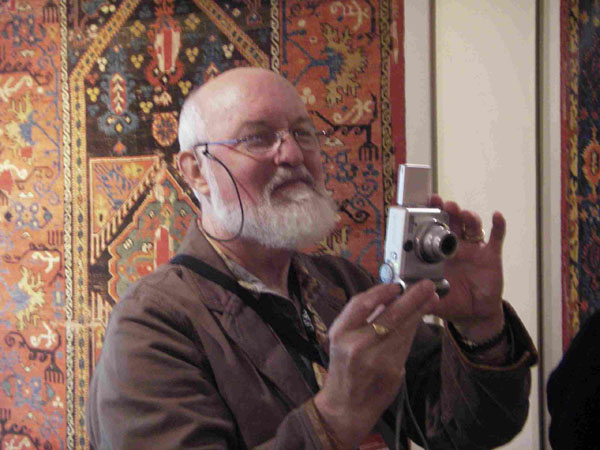We have talked before about the fact that the experienced U.S. collector has been socialized into a fairly narrow palette width outside of which colors are suspected of being the result of synthetic dyeing.
We have also sometimes noted that this results in experienced collectors barring themselves from pieces, the dyes of which may be bright, but entirely from natural sources.
Consider this example. The rug below occurs in the Konya rug musem.

It is not a beautiful rug.

One end gives a hint that it may have once had a quite dramatic border but that is almost entirely gone.
There is even a kind of jarring instance of color in this piece. Its field design is punctuated periodically by orange stars and small diamond forms.

Uncued, I think, many experienced collectors would see this orange as highly suspicious.
The inconvenient thing, many of you will know, is that primary merit of this piece is in its estimated age. It is estimated to have been woven in the 13th century, 500 years before the first synthetic dyes were created.
This example could be multiplied. There are a great many rugs in Turkish museums that exhibit quite bright, sometimes garish colors but which are estimated to have been woven long before synthetic dyes came on the scene.
Turkish dealers know this and are, in fact, confronted with it much more frequently than is the typical experienced collector. More, it is getting harder and harder to find older material, and since the Turkish dealer knows that most collectors are working with too narrow a palette, they are reluctant to admit that bright colors are synthetics. Experienced collectors, on their side, are often amazed at the bright, jarring colors that Turkish dealers will insist are natural.
This is a difference in perspective that is likely to continue, perhaps even get more marked.
Come now to a a fragment of a small Kyrgyz bag that I bought in Konya.

Although all of us strive for natural dyes only, I think it is acknowledged that if you are going to collect non-Turkmen Central Asia pieces you will have difficulty if you are entirely allergic to synthetic dyes.
So when I first saw this piece, I was prepared for the liklihood that at least some of its dyes would be acknowledged as likely synthetic.
Here are a couple of closer images front and back to help you examine it as well as you can in this medium.



Mehmet Ucar, from whom I bought it, from thinks the dyes are natural (no one is talking about chemical testing, mind you, this is all just eye evaluation). Now Mehmet is a long-time natural dyer: he knows far more than I about what colors can be produced naturally. More, I have now seen, myself, what is in the Turkish museums.
I like this piece. I like its diminutive size, and its compartmented character and its graphic simplicity and, yes, power. I even like its bright colors. But I would bet that they are synthetic.
Nobody's going to resort to chemical test here, so who's to know who is right?
Regards,
R. John Howe

